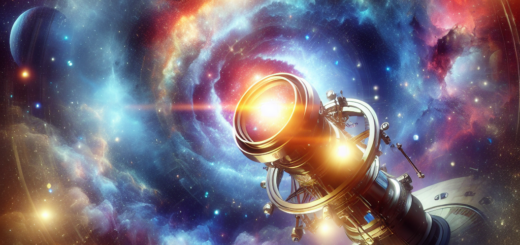A Window to the Universe: How Space Telescopes are Expanding Our Understanding of Space
Space telescopes have revolutionized our understanding of the universe by providing us with a window into the vast expanse of space. These powerful instruments have allowed us to observe distant galaxies, stars, and planets in ways that were once thought impossible. By capturing images and data from the depths of space, space telescopes have expanded our knowledge of the cosmos and opened up new avenues of exploration.
One of the most famous space telescopes is the Hubble Space Telescope, which was launched into orbit by NASA in 1990. Since then, Hubble has provided us with stunning images of the universe, revealing the beauty and complexity of the cosmos in ways that were previously unimaginable. Hubble has captured images of distant galaxies, nebulae, and other celestial phenomena, giving us a glimpse into the vastness of space and the wonders it holds.
In addition to Hubble, there are several other space telescopes that have made significant contributions to our understanding of the universe. The James Webb Space Telescope, set to launch in 2021, will be the most powerful space telescope ever built, capable of seeing deep into space and capturing images of the earliest galaxies in the universe. The Chandra X-ray Observatory, launched in 1999, has allowed us to study high-energy phenomena such as black holes and supernovae in unprecedented detail.
These space telescopes have revolutionized our understanding of the cosmos by allowing us to see things that are invisible to the naked eye. By capturing images in different wavelengths of light, such as infrared and X-ray, space telescopes have revealed the hidden beauty of the universe and helped us unravel the mysteries of the cosmos.
One of the most exciting discoveries made by space telescopes is the existence of exoplanets – planets that orbit stars outside of our solar system. The Kepler Space Telescope, launched in 2009, has discovered thousands of exoplanets, some of which may be capable of supporting life. These discoveries have opened up new possibilities for the search for extraterrestrial life and have sparked renewed interest in the study of other worlds.
Space telescopes have also played a crucial role in our understanding of the origins of the universe. By studying the cosmic microwave background radiation – the remnant radiation from the Big Bang – space telescopes have provided us with valuable insights into the early history of the cosmos and the formation of galaxies.
In conclusion, space telescopes have revolutionized our understanding of the universe by providing us with a window into the vast expanse of space. These powerful instruments have allowed us to see things that were once thought impossible and have expanded our knowledge of the cosmos in ways that were previously unimaginable. As we continue to explore the universe with the help of space telescopes, we can look forward to even more exciting discoveries and a deeper understanding of the wonders of the cosmos.













